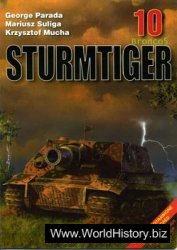Mummy fitting, scarab (214); see p. 310
Provenance
Standard early provenance; acquired with gold scarabs 233-4.
Previous assessment
Winlock believed the scarab was ancient but was uncertain as to how it would have been worn, due to the horizontal hole and lack of wear. In any event he believed that it was used with the very similar gold scarabs 233—4 (Winlock 1948: zyf), now considered modern.
Current understanding
This object is weathered, but no excavated parallel was found for its shape.
The block-like form—as well as the lateral rather than axial hole—suggest use as a heart scarab; however, this usage is not supported by the small size and lack of inscription. Two lapis examples in the Oriental Museum, Durham—without provenance—are close in general shape although less than half the size: one is with a flat striated body, rectangular base plate, but no hole (Ruffle 1983: fig. 14 [top left], no. N. 1243; see Andrews 1994: 59 on Late period funerary scarabs). Others seen in museum collections have various features corresponding to those of the lapis example here but their provenance and date are also unknown.
Some features occur on larger scarabs that are provenanced. A composite amulet-scarab buried with Tuya has a lateral hole at the top, axial hole from top to bottom, and lateral hole near the midsection of the scarab (CG 51165, Quibell 1908: 61). These holes were no doubt meant for sewing the item to the wrapped mummy. A blue glass scarab on an inscribed felspar base—also for Tuya (CG 51164, Quibell 1908: 61)—has no hole.
214 Scarab
Fig. 234a
MMA 26.8.90 (P 139).
Source Purchase, Fletcher Fund, 1921.
Material Lapis lazuli.
Dimensions L 2.7, W 2.1.
Manufacture Two corners of base plate fairly sharp, third chipped off, fourth abraded; originally the base was probably rectangular without the rounded corners it has now. Scarab is broad; two parallel lines divide one wing from the other and the wings from the prothorax. In side view, a deep vertical line that begins within the elytra is
Evident between the legs. The forelegs merge into a “pad” in front of the beetle, the hind legs do the same at the rear. The eyes are represented only by a swelling above the clypeus, mistakenly given a definite line in the drawing here. The shape of the clypeus was apparently trapezoidal, with hatching along the edge as on the gold examples. A horizontal hole was drilled from each side toward the middle.
Condition Mouth of beetle and two corners of base plate chipped off. Certain amount of weathering. Incrustation in small hatched lines on bottom of base plate.
Bibliography Lansing 1940: pi. ii; Winlock 1948; pi. 13I; Hayes 1959b: 134.




 World History
World History









